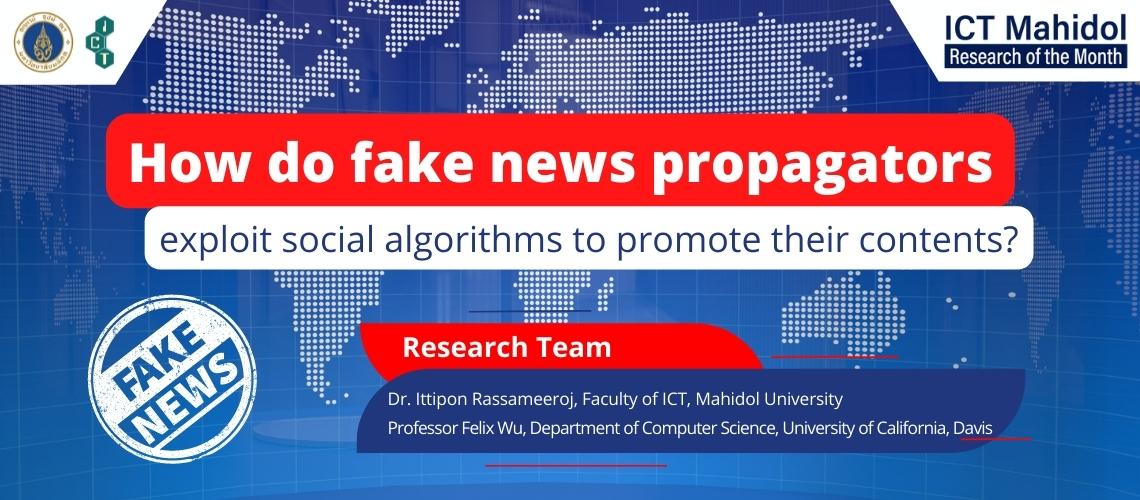Fake news is misleading information that appears as credible, catchy and may have been created for commercial or advertorial purposes. Due to political misinformation in the US, Dr. Ittipon Rassameeroj, an instructor from the Faculty of Information and Communication Technology, Mahidol University, as part of a team from the Computer Security Lab, Department of Computer Science, University of California, Davis, conducted research on anti-fake news.
“When I finished my Ph.D. dissertation, I was still obsessed with fake news topics plus there were ready-to-use datasets extracted from Facebook. So, I wrote a small-scale conference paper with my advisor, Professor Felix Wu from UC Davis, entitled “How do fake news propagators exploit social algorithms to promote their contents?” I wanted to find out what causes fake news to disseminate so fast. Even though we are now living in the age of Web 3.0, most people are Web 2.0 users, which means they can be content creators. Personally, I believe social algorithms are one of the factors that make it scatter widely and rapidly.”
Social algorithms are mechanisms that are controlled by social media services. They are used for customizing content for individual users who have a specific fondness, interests, or attitudes. Therefore, two users on the same Fanpage will be fed with different news as well as fake news. It depends on how they interact with the context of the fake news.
“I focused the study on the comments on the Facebook’s Fanpage. The assumption was that propagators posted fake news as a comment shortly after a post was created. If users interacted with the misinformed comment, they would keep receiving updates from that fake news creator.”
While realizing the behaviors of the propagators, Dr. Rassameeroj has drafted a computational fact-checking model to demonstrate two processes: first, a keyword analyzer to monitor social phenomena, and second, news judgement, which is a fact-checking tool to distinguish fact and misinformation.
“We need IT specialists to analyze natural language so that we could extract keywords or even buzzwords. And we need journalists to analyze what lies beneath the surface of the news. However, the final goal is to make the computer learn journalistic knowledge and skills. This is what we call “Machine Learning”. Also, another important thing is the support of the government to let anti-fake news run independently.”
Indeed, cooperation from diverse specialists and an open policy would make anti-fake news free from political intervention and operated by independent organizations.
- Download the publication “How do fake news propagators exploit social algorithms to promote their contents?”: https://www.elearning-conf.org/wp-content/uploads/2020/07/02_202008L019_F045.pdf
- Follow Dr. Ittipon Rassameeroj’s work: https://ittiponr.github.io

